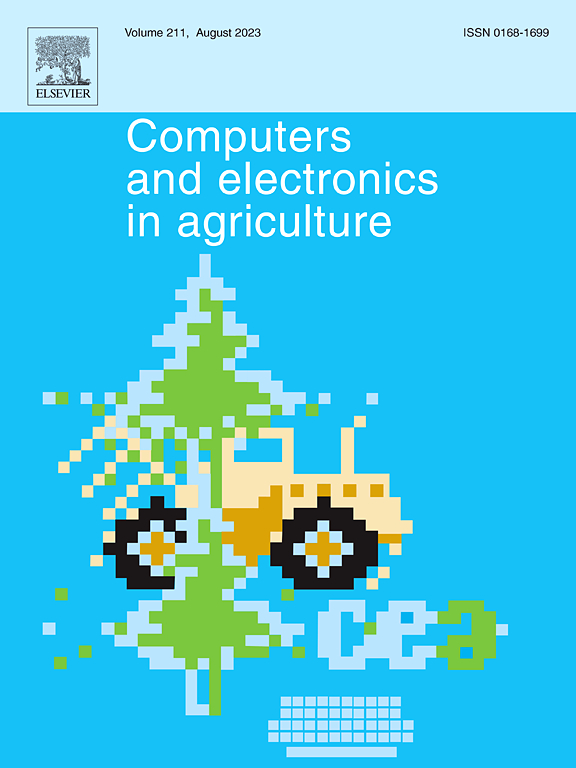Simulation soil water-salt dynamic and groundwater depth of spring maize based on SWAP model in salinized irrigation district
IF 7.7
1区 农林科学
Q1 AGRICULTURE, MULTIDISCIPLINARY
引用次数: 0
Abstract
In order to explore the reasonable groundwater depth under current condition of water-saving implementation in Hetao Irrigation District, the SWAP (Soil-Water-Atmosphere-Plant) model was calibrated and validated based on field experiments data of spring maize in 2019 and 2020. The SWAP model was used to simulate soil water-salt flux and water-salt balance for 0–100 cm soil layer under current condition of groundwater depth, soil water-salt balance for 0–100 cm soil layer under different groundwater depth scenarios after model calibration and validation. The results showed that soil water flux cumulant of 0–100 cm soil layer was 111.6 mm and 63.1 mm during the two-year simulation periods under current condition of groundwater depth, respectively. Soil salt flux cumulant of 0–100 cm soil layer was −10.3 mg·cm−2 and −11.1 mg·cm−2 during the two-year simulation periods under current condition of groundwater depth, respectively. Soil salinity increased by 7.7 mg·cm−2 and 6.9 mg·cm−2 in 0–100 cm soil layer during the whole growth periods of spring maize under current condition of groundwater depth in 2019 and 2020, respectively. It had a risk of soil secondary salinization under current condition of groundwater depth in study area. It was necessary to regulate the groundwater depth to reduce soil secondary salinization. The simulation results of soil water-salt balance under different groundwater depth scenarios showed that when the average groundwater depth was about 1.96 m, it was conducive to crop growth and avoided soil secondary salinization. It was the appropriate groundwater depth under the condition of spring maize water-saving irrigation in study area. The underground pipe drainage system can be used to reduce the average groundwater depth to below 1.96 m, and the risk of soil secondary salinization is slight in study area.
求助全文
约1分钟内获得全文
求助全文
来源期刊

Computers and Electronics in Agriculture
工程技术-计算机:跨学科应用
CiteScore
15.30
自引率
14.50%
发文量
800
审稿时长
62 days
期刊介绍:
Computers and Electronics in Agriculture provides international coverage of advancements in computer hardware, software, electronic instrumentation, and control systems applied to agricultural challenges. Encompassing agronomy, horticulture, forestry, aquaculture, and animal farming, the journal publishes original papers, reviews, and applications notes. It explores the use of computers and electronics in plant or animal agricultural production, covering topics like agricultural soils, water, pests, controlled environments, and waste. The scope extends to on-farm post-harvest operations and relevant technologies, including artificial intelligence, sensors, machine vision, robotics, networking, and simulation modeling. Its companion journal, Smart Agricultural Technology, continues the focus on smart applications in production agriculture.
 求助内容:
求助内容: 应助结果提醒方式:
应助结果提醒方式:


